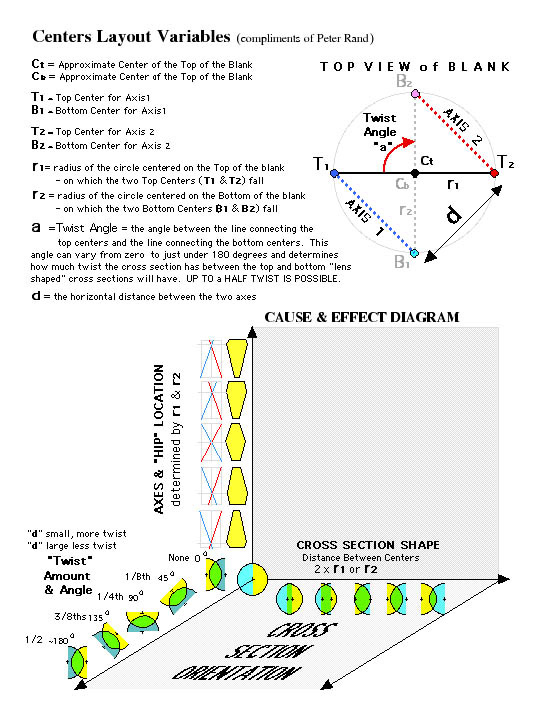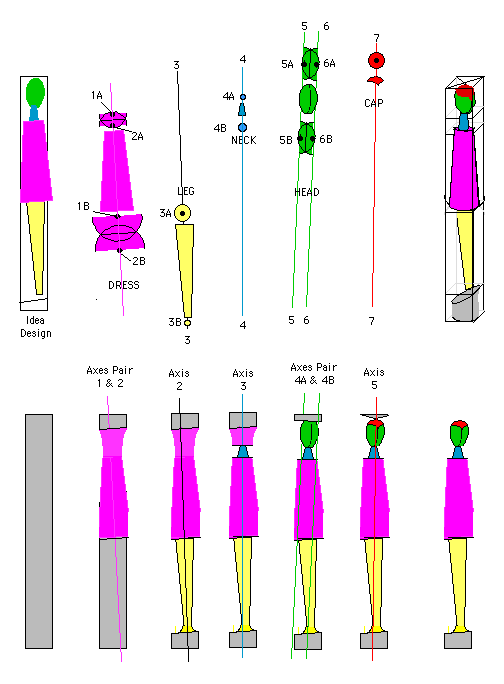DESIGNING A MULTIPLE AXES PIECE
My oldest grand daughter, Kaitlin, age 7, is a cute little wisp of a girl, with, appropriately, pixie cut hair and a way of looking up at you with big brown eyes and an impish smile. I wanted to do a multiple axes piece that would capture some of her cuteness. This would be my first multiple axes piece that would be DESIGNED - before getting to the lathe.
Here's where the design started. On the left, my 3/4" x 3/4" by 6" tall turning blank with the body components color coded. On the right, the desired piece inside the blank. Between the two, the components with their axis or axes and their cross sections top and bottom. Below of that is the turning sequence.
As you can see, the head and dress each have two axes and two arcs, creating lens shaped cross sections. The top of the head, neck and legs each have a single axis each, and their cross sections are round. Note that the top of the head, dress and legs are all on angled axes.
Now lets see the actual multiple axes turned piece.
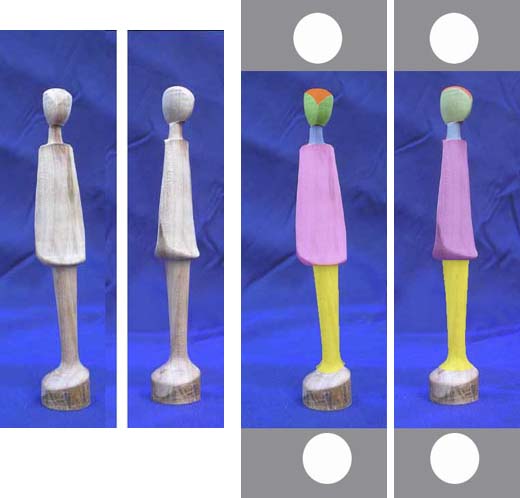
On the left, two views of the results. To the right, the color coding identifies the components of the design - head, neck, dress and legs.
The face (GREEN) was turned on two axes, two intersecting arcs, its cross section being lens shaped.
The top of th head (RED) was turned on an axis - a dome intersecting the face's two arcs
The neck (BLUE) was turned on a single axies to full round, the profile tapering from shoulder to head
The dress (PINK) was turned on two axes, two intersecting arcs, its cross section being lens shaped and tapering slightly up to the shoulders
The legs (YELLOW) were turned on an axis to full round and tapered from hip to ankle
As you can hopefully see, if you understand What Does What, you can turn subtle nuances when using multiple axes - a slight tilting of the head to one side, a wide or narrow face, a narow "S-curve" from top of head to foot, a slight twist to the dress.
Working with multiple axes takes a shift in thinking from the more familiar single axis, turn to round cross sections, single profile turning.
So let's look at some key multiple axes turning concepts and how they work.
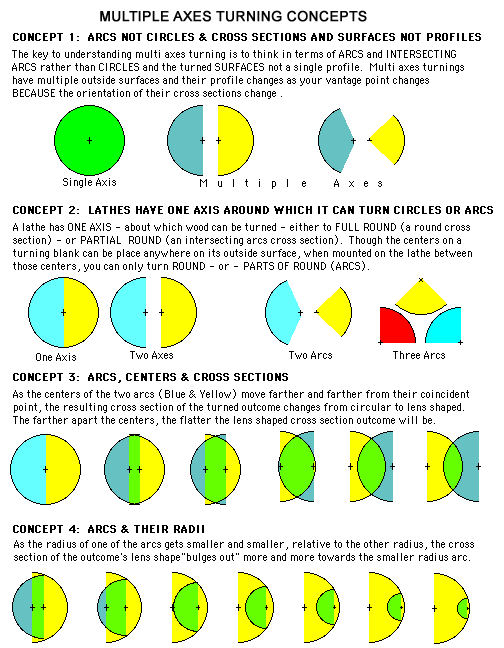
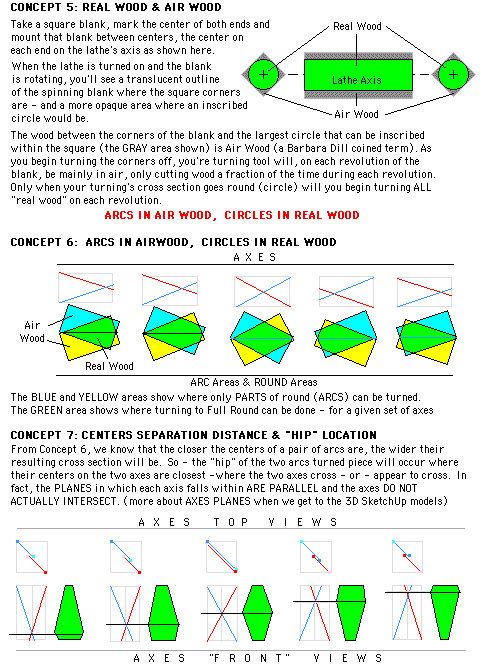
Now let's all the two axes, intersecting arcs concepts together - and add a TWIST. (You might want to download the following GIF file, print it, and keep it handy for when you decide to start playing with multiple axes turning)
